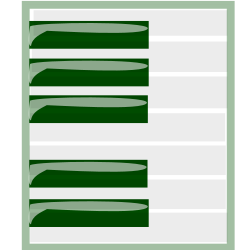I just noticed that MIDI turned 30 years ago just a short time ago. This 31.25kbd 10-bit, 16-channel network is still very much in use today, 30 years after its official 1.0 specification release in August 1983. I forgot to say “Happy Birthday MIDI” at the right day.
The Register had an article series on it. Happy birthday MIDI 1.0: Getting pop stars wired for 30 years – Part One: Something to make a song and dance about article tells that the MIDI interface started off just living up to expectations and connecting devices together but later it became an enduring ecosystem. Not only did this network protocol deliver both real-time and non-real-time data transfers, it even notched up a platform-neutral file format.
Happy birthday MIDI 1.0: Slave to the rhythm – Part Two: The notes in the machine article tells that over the years there have been various attempts to modernize MIDI, but it has an “Ain’t broke, don’t fix it” resilience which owes a huge amount to the fact that nobody owns it, so it’s everywhere. One of the first non-musical applications was back in 1991 with MIDI Show Control enabling lighting to be controlled using MIDI messages. While many of these applications are adaptations or additions, significant changes to the original spec haven’t materialized. As MIDI is everywhere on electronic instruments and can exist as a protocol in virtual environments too, MIDI communication looks likely to remain supported alongside whatever else is developed in the future.
OSC is an alternative or an option that integrates with MIDI. It seems to be gaining some support. OSC is a content format originally intended for sharing music performance data (gestures, parameters and note sequences) between musical instruments (especially electronic musical instruments such as synthesizers), computers, and other multimedia devices. OSC is often used as an alternative to the 1983 MIDI standard, where higher resolution and a richer musical parameter space is desired. OSC messages are commonly transported across the internet and within home and studio subnets using (UDP/IP, Ethernet).

2 Comments
Tomi Engdahl says:
3.5mm mini stereo cables to MIDI 5 pin DIN
https://www.midi.org/articles-old/3-5mm-mini-stereo-cables-to-midi-5-pin-din
In the past few years MIDI hardware products have become smaller and smaller especially as many of them are meant to be used with mobile computing devices. But this has caused some issues as 5 Pin DIN MIDI plugs are pretty big. No one wants an accessory that’s 10 times the size of the smartphone it connects to ! So recently many products have used a stereo 3.5mm minijack connector on the product itself with a breakout cable to standard 5 Pin DIN MIDI connector.
CreateDigitalMusic article on “What if we used stereo minijack cables for MIDI?”
”It was acceptable in the 80s…”
The standard MIDI DIN cable – that’s the big honkin’ connector you use on most of your MIDI gear – has become the bane of music hardware makers. The problem is, as gear has gotten smaller, the standard DIN connector hasn’t. And that’s a big problem, literally.
As a result, a lot of hardware that should have had MIDI in and out doesn’t, to save room. Or it’s forced to be thicker than it needs to be. Or it squeezes out other useful ports.
To be clear,on devices that can fit a MIDI DIN, it still makes sense. It’s a standard part,
Now, you may have noticed a lot of gear includes minijacks onboard. A stereo minijack (3.5mm “miniklinken”) connector has three pins – and MIDI also has three pins. (Okay, it has five, but two are unused.) Look at the breakouts included in the box, and what you’ll see is a standard 3-pin stereo minijack on one end, and then a standard 5 Pin DIN connector on the other.
But here’s where things get interesting. Imagine you have two pieces of gear, each with these minijack-to-DIN breakouts. And you want to connect them together. What would happen if you skipped the little DIN dongles and ran an ordinary stereo minijack cable between them?
Well, whether it worked or not would depend on how that minijack connector itself was wired.
It turns out most of them are using the same wiring – seen below.
So long as you have two pieces of gear wired this way, you can connect them with a standard stereo minijack audio cable (that’s a single stereo minijack at both ends). It’s exactly the same as using a MIDI cable.
In this category:
IK Multimedia (iRIG MIDI – that’s the diagram at top)
Novation (such as Launchpad Pro)
Arturia (such as BeatStep Pro)
That’s a pretty cool accidental standard. So maybe we should make it less accidental.
Tomi Engdahl says:
Mini-jack connectors are now an official MIDI standard
https://www.musicradar.com/news/mini-jack-connectors-are-now-an-official-midi-standard
This should makes things a little easier
Understanding the need for a smaller connections for MIDI-enabled devices, the MIDI Manufacturers Association has released specifications for the use of TRS connectors.
We’ve all seen 2.5mm and 3.5mm TRS connectors used on multiple synth products over the past few years, instead of the traditional and somewhat bulky DIN connectors. The MMA wants to ensure that everyone is singing from the same hymn sheet, so that full compatibility between TRS and DIN-MIDI devices is assured.
Specification for TRS Adapters Adopted and Released
https://www.midi.org/articles-old/trs-specification-adopted-and-released